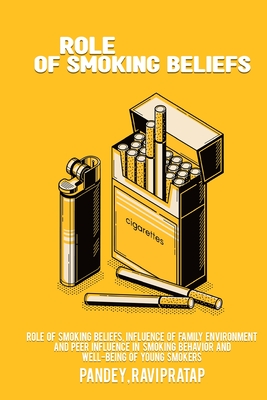
Role of smoking beliefs, influence of family environment and peer influence in smoking behavior and well-being of young smokers
Description
INTRODUCTION Smoking has been identified as a major problem of adolescents, adults and elderly people in India and worldwide. It poses many health hazards in long term such as respiratory infections, tuberculosis deaths, cardiovascular and chronic obstructive pulmonary disease, anxiety, depression, stress, etc. The disturbances to individuals' physical and mental wellbeing may adversely compromise capacity to form and maintain relationships and lead a fulfilling life (WHO, 2001). Despite, knowing the long term negative effects of smoking, many people are inconsiderate about such negative health outcomes (WHO, 2001). Tobacco (smoking and smokeless) is the only legal drug that kills many of its users when used exactly as intended by manufacturers. According to the World Health Organization (2009), any person smoking any tobacco product either on a daily basis or occasionally can be considered as a smoker. The one who smokes a tobacco product at least once a day from past 30 days is a daily smoker whereas, a person is considered as an occasional smoker if he/she smokes a tobacco product but not every day (WHO, 2008).The most dominant form of tobacco use all over the world is cigarette smoking. In India, tobacco is available at different price points and in various forms such as smoking and smokeless forms e.g, bidi, cigarettes, hookah, cigars, chillum, khaini, paan masala, gutkha, chutta, gul, mawa, misri, etc. This reflects the dynamic socio-economic and demographic patterns of tobacco consumption (John, Roo, & Rao, et al., 2010). Each year smoking kills approximately six million people. Out of these over five million people die as a direct consequence of tobacco use, while over six lakh deaths of non-smokers occur as a result of exposure to second-hand smoke. World



